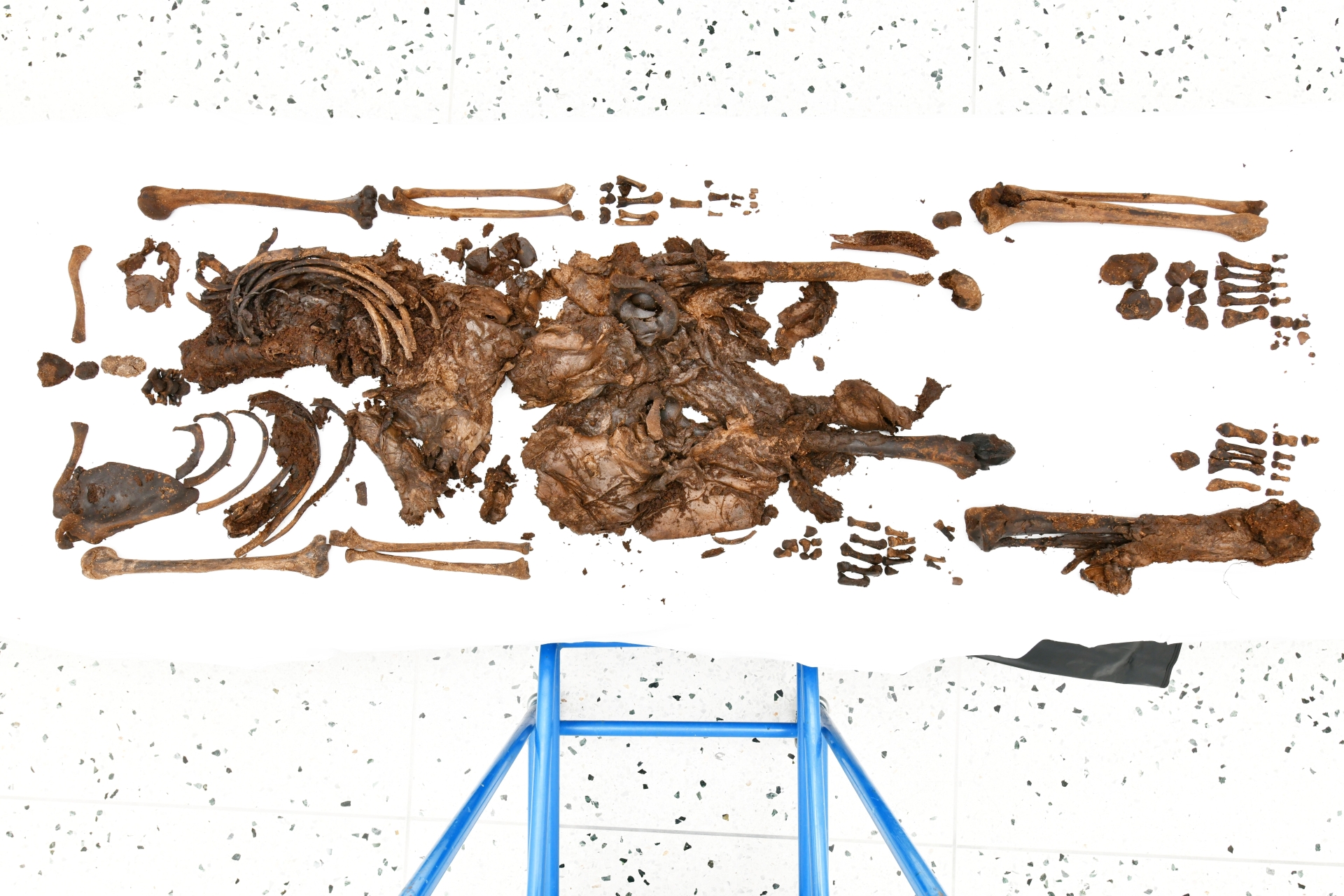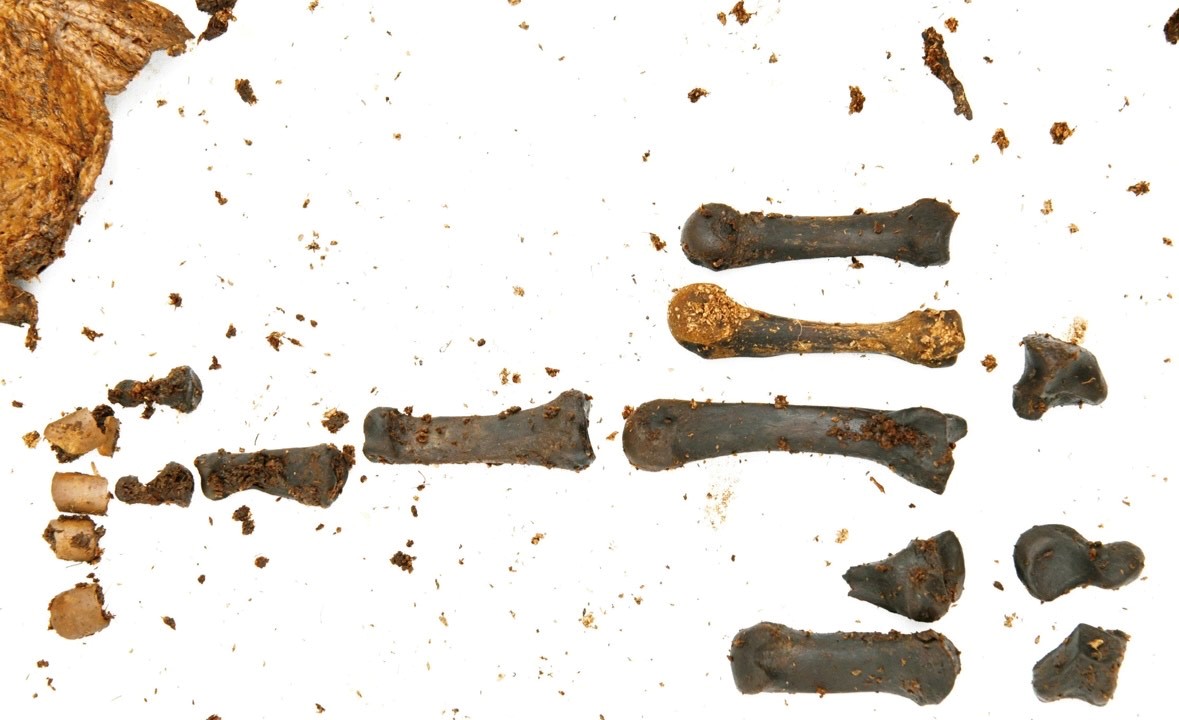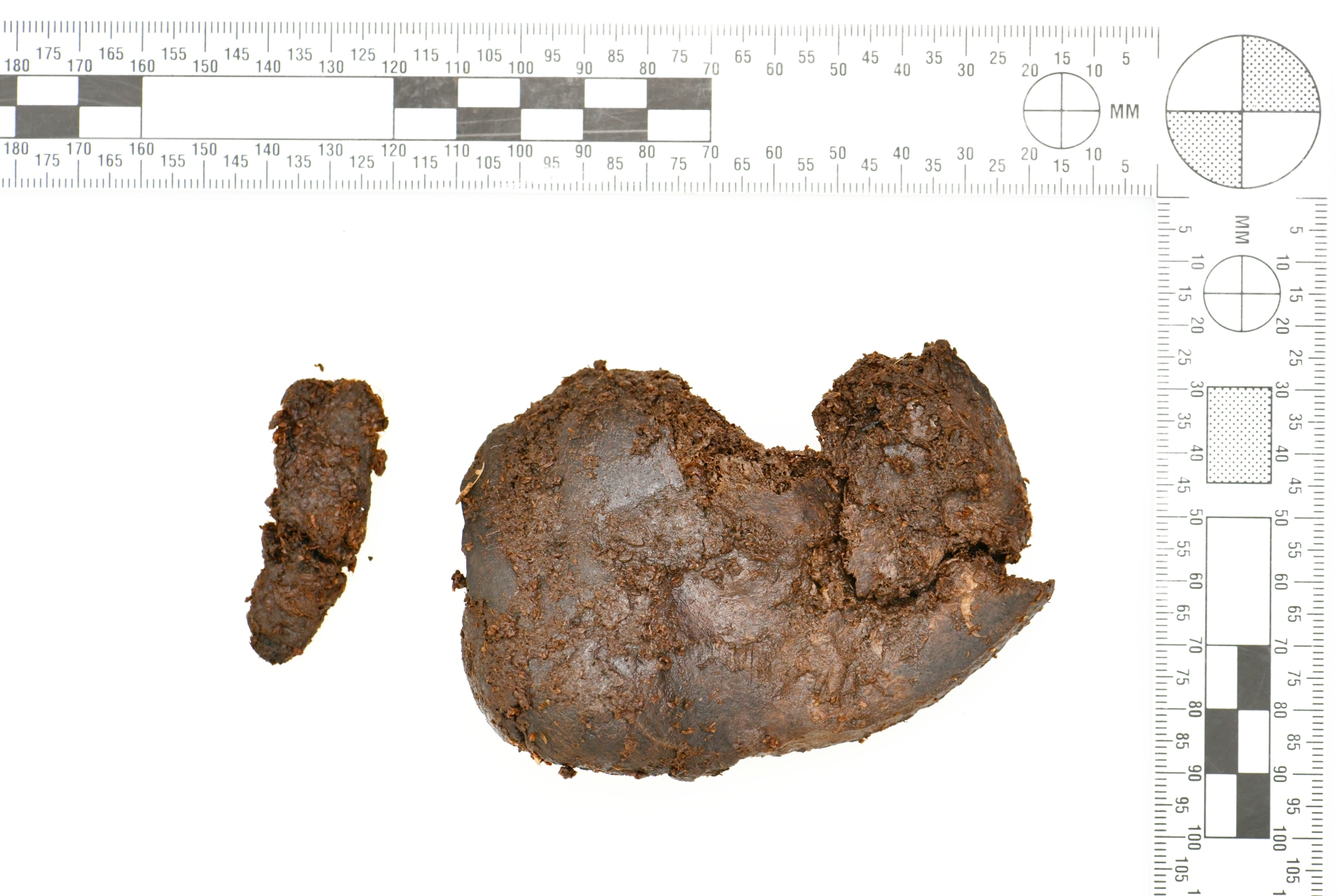Excavation site near Bellaghy
On October 26, 2023, the police were called after human remains were found in a bog near Bellaghy.
Since no evidence indicated that the remains discovered in the peatland were ancient, the police conducted further examination before ruling out the homicide element.
Detective Inspector Nikki Deehan was part of the recovery team that carried out the recovery of the remains and excavated the site.
“The remains were very well preserved, it was so well preserved that on the initial visual check, we could not be sure whether they were ancient remains or as a result of a more recent death.
“We recovered the remains with full forensic consideration in case there was to be a criminal justice outcome, and we treated the remains with dignity in hopes that we will bring in a loved one to its family.”
Dr Alastair Ruffell, forensic geologist at Queen’s University Belfast also worked on the case.
In conjunction with the University of Dundee, they were able to identify the remains of a human according to Detective Inspector Nikki Deehan.
“The University of Dundee has a 24/7 helpline and it came back as human at which time the owners did the right thing and contacted the police,” said Dr Alastair Ruffell. “You got a human bone so this is immediately treated as suspicious because it's an unrecorded death.”
After further testing, the remains were proven to be 2,000-2,500 years old. The police were first alerted of the found of human bones on the surface of the peatland.

“This is a truly unique find for Northern Ireland,” said Detective Inspector Deehan.
“There is no other bog body in Northern Ireland that still exists. And on a more global scale, this is one of the few remains that have both bone and skin with partial skin, fingernails, toenails, and a kidney, so this is truly unique.”
The excavation of the remains first uncovered a tibia, a fibula, a humerus, an ulna, and a radius bone relating to the lower left leg and right arm respectively.
Multiple other parts were found around five metres from the zone where it was initially found.

“A post-mortem was carried out in conjunction with expert forensic anthropologists and they ascertained that at the time of death, the remains were between 13 and 17 years old and possibly male,” said Detective Inspector Deehan.
“We had no reason to believe this was ancient. We were greatly surprised when the radiocarbon dating came back that it was between 2,000 to 2,500 years old, approximately 500 BC.
“I can’t speculate on what the cause of death is and there was nothing to indicate what the cause of death is.
“We don’t know what the surface of the land would have been like at that time, whether there was more of a woodland or perhaps washed up in the bog, there were nearby rivers.
“Because time has passed, there's no way that we can determine the cause of death.”

Due to the wet ecosystem of bogs, the remains were difficult to excavate.
“This was a very difficult place to work. It immediately collapses as soon as you dig,” said Dr Alastair Ruffell. “You can't get the full context of what's there.”
“The remains were discovered at approximately one metre below the current land surface which matches the radiocarbon estimates. In addition, they were amongst a cluster of fossil tree remains suggesting that the body may have died or been buried in a copse or stand of trees, or washed in.
“I used what is called Ground Penetrating Radar because it can detect organic matter. I surveyed the area for a number of reasons, to check that there were no other human remains there.
“Other parts of this individual could still be there to be found and also to gather as much information as possible.
“I like to help other people,” said Dr Alastair Ruffell. “If I can help the archaeological story and the local history, given this is Seamus Heaney Country.”
The famous Irish poet wrote a series of poems inspired by bog bodies.
“Seamus Heaney, when he was writing his series of poems inspired by bog bodies, probably never expected such a find on his own doorstep,” said John Joe O’Boyle, Chief Executive of Forest Service. “It certainly adds an important chapter to the historical and cultural significance of this hinterland and archaeological discoveries of bog bodies across Europe.”
According to Dr Alastar Ruffel, there are only “three bog bodies being recorded in Northern Ireland and there are about 17 in the whole of the Island of Ireland.”
Dr Alastair Ruffell said this is a highly significant discovery due to the fact that the remains were able to be radiocarbon-dated.
“This is the first Northern Irish radiocarbon-dated bog body because the remains of the other ones no longer exist.”
“The three [bog bodies found in Northern Ireland] are historic and don't remain anymore, there may be a lock of hair from one. Two are from County Londonderry, and one is from County Down. The County Down, Drumkeeragh bog body was the one Seamus Heaney wrote about in ‘Bog Queen’.”
The remains will be kept by the National Museums NI which have statutory responsibilities for acquiring and preserving archaeological finds from the past.
Subscribe or register today to discover more from DonegalLive.ie
Buy the e-paper of the Donegal Democrat, Donegal People's Press, Donegal Post and Inish Times here for instant access to Donegal's premier news titles.
Keep up with the latest news from Donegal with our daily newsletter featuring the most important stories of the day delivered to your inbox every evening at 5pm.